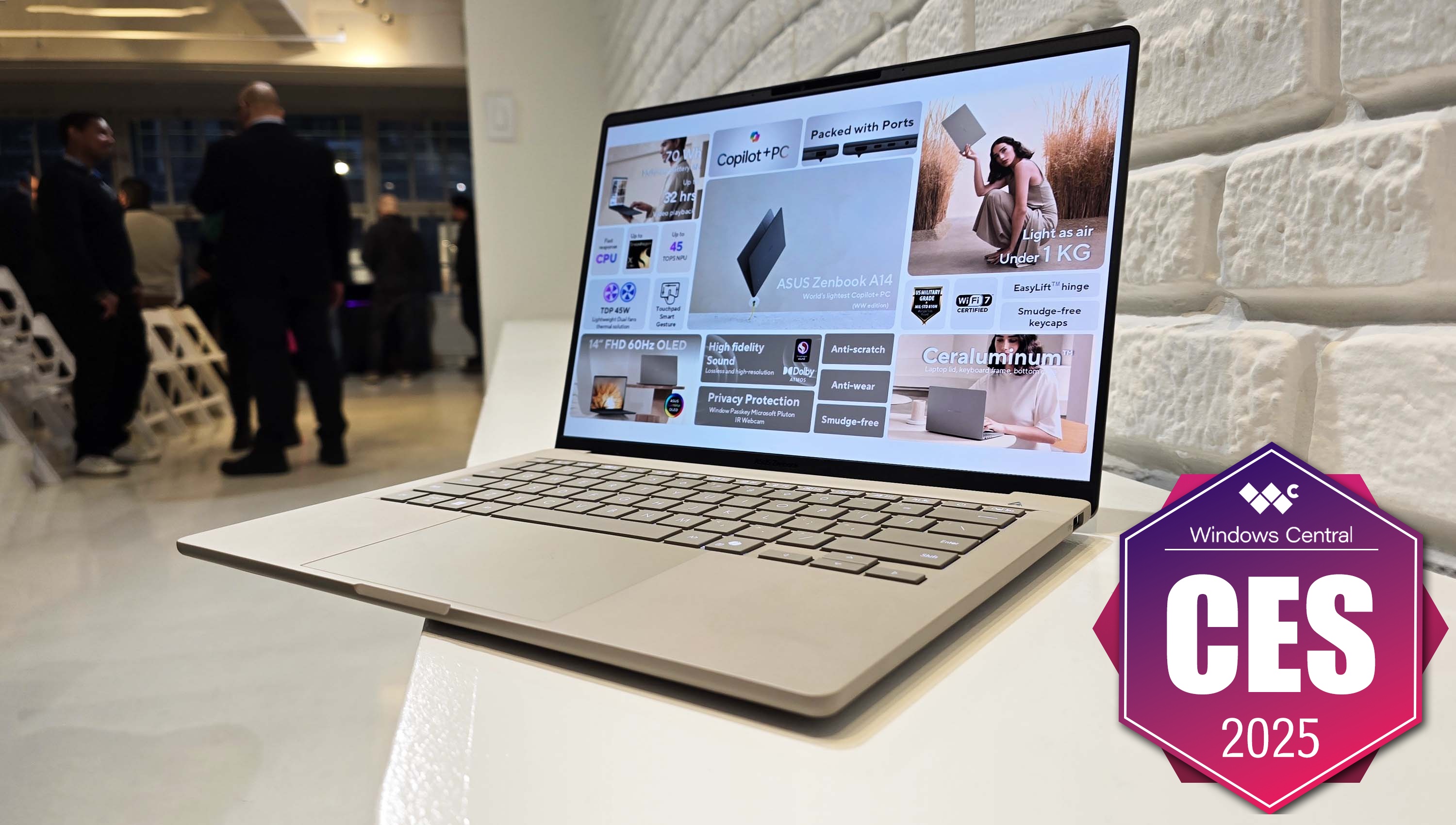
ASUS changed everything at CES 2025 in Las Vegas this week with its new Zenbook A14 (UX3407). Typically, when we talk about ‘best laptops, ’ we veer into the $1,000+ price range. After all, that’s where new innovations and risks take place before the tech, once proven, trickles down to mainstream PCs.
But not this time.
With a price starting at $899 (and soon available at Best Buy), the Zenbook A14 is worth seriously considering for your next purchase. Here’s why.
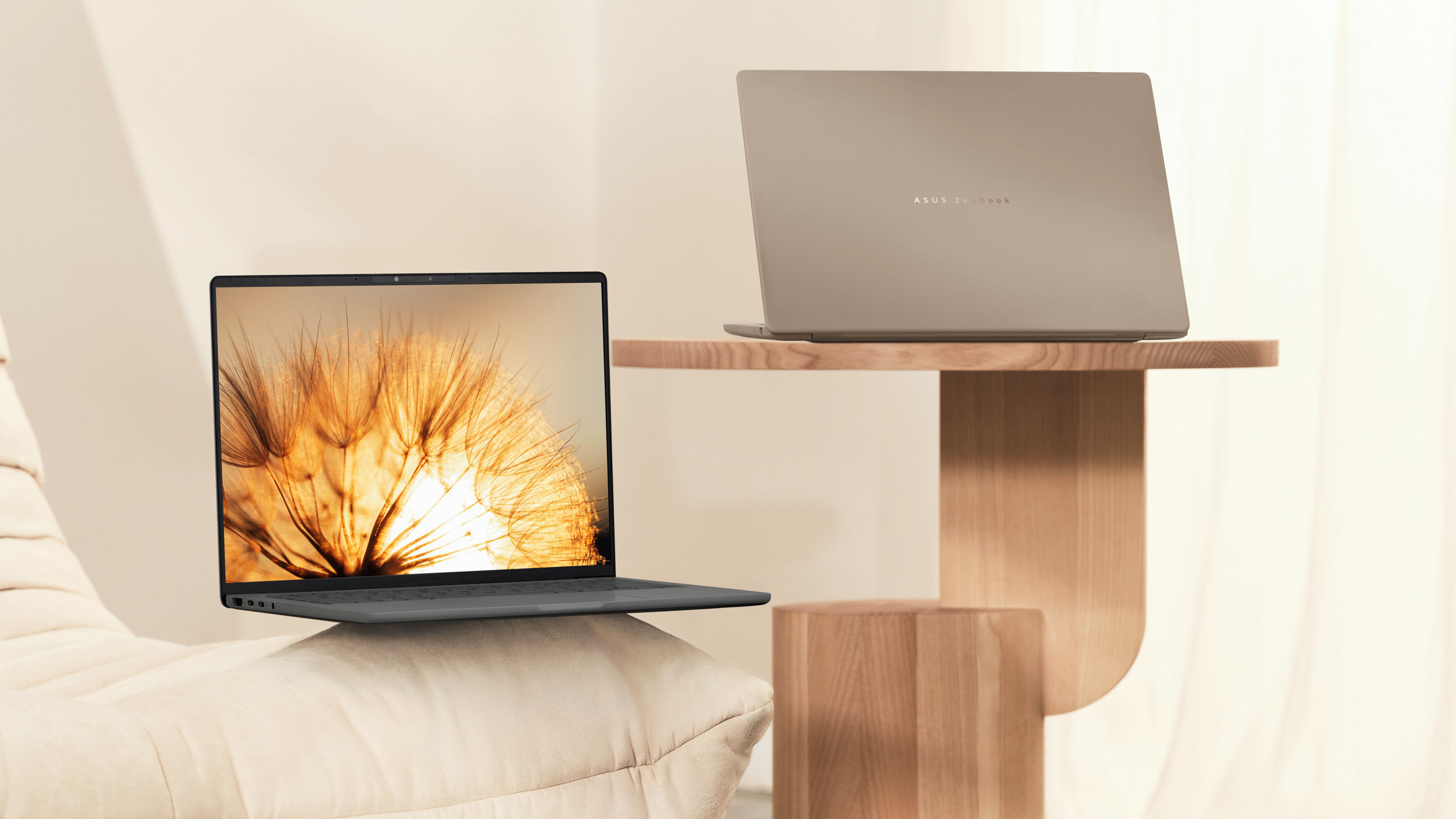
Zenbook A14 specs: Extremely light, and extreme battery
Let’s get the specs out of the way as the Zenbook A14 (UX3407) is no slouch.
First, the starting weight is 2.18 lbs (0.98kg) and when the tech press and I got to handle it we all were dumbfounded as it felt hollow, like a dummy PC. It’s absurdly light. And yet, somehow, ASUS squeezed in a 70WHr battery. For those who don’t know, 70WHr is on the large size for laptops as we usually see the “super light” category opt for something more in the 50s range.
What surprised many of us was, despite being ridiculous light, you could still open the lid with one hand. That’s some delicate and precise engineering considering the dearth of mass.
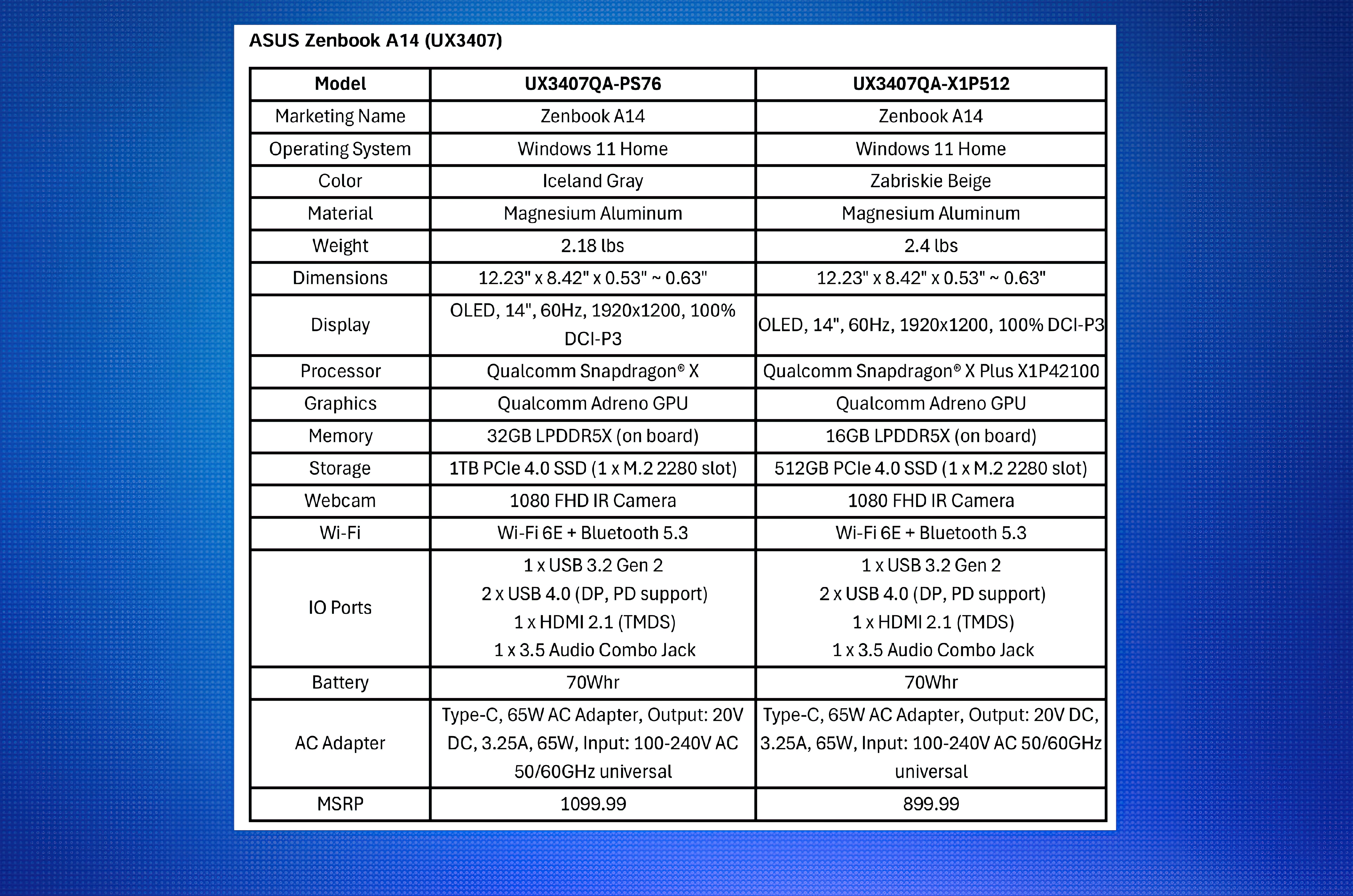
When combined with Qualcomm’s Snapdragon X processors (the Zenbook A14 gets either the new Snapdragon X or Snapdragon X Plus (X1P-42-100)), ASUS claims the following for battery life, which is eye-opening:
- Up to 32 hours of offline video playback
- Up to 19.5 hours of web browsing
- Up to 28 hours of online video streaming
That 19.5-hour metric is really the important number as it involves data, opening and closing tabs, loading graphics, etc., and is how most people use laptops (over 50% of laptop usage is in the browser). Let’s say ASUS is being generous, and we “only” get 15 hours; that is still an insane milestone.
Some other highlights, even at the starting $899 configuration, include a gorgeous 14-inch OLED 60Hz display with a 1920x1200 resolution and 100% DCI-P3. That makes this display slightly higher than Full HD (1920x1080) and puts it into the WUXGA class, which, while not UHD (“4K”), is a solid middle ground for most users (and helps extend battery life).
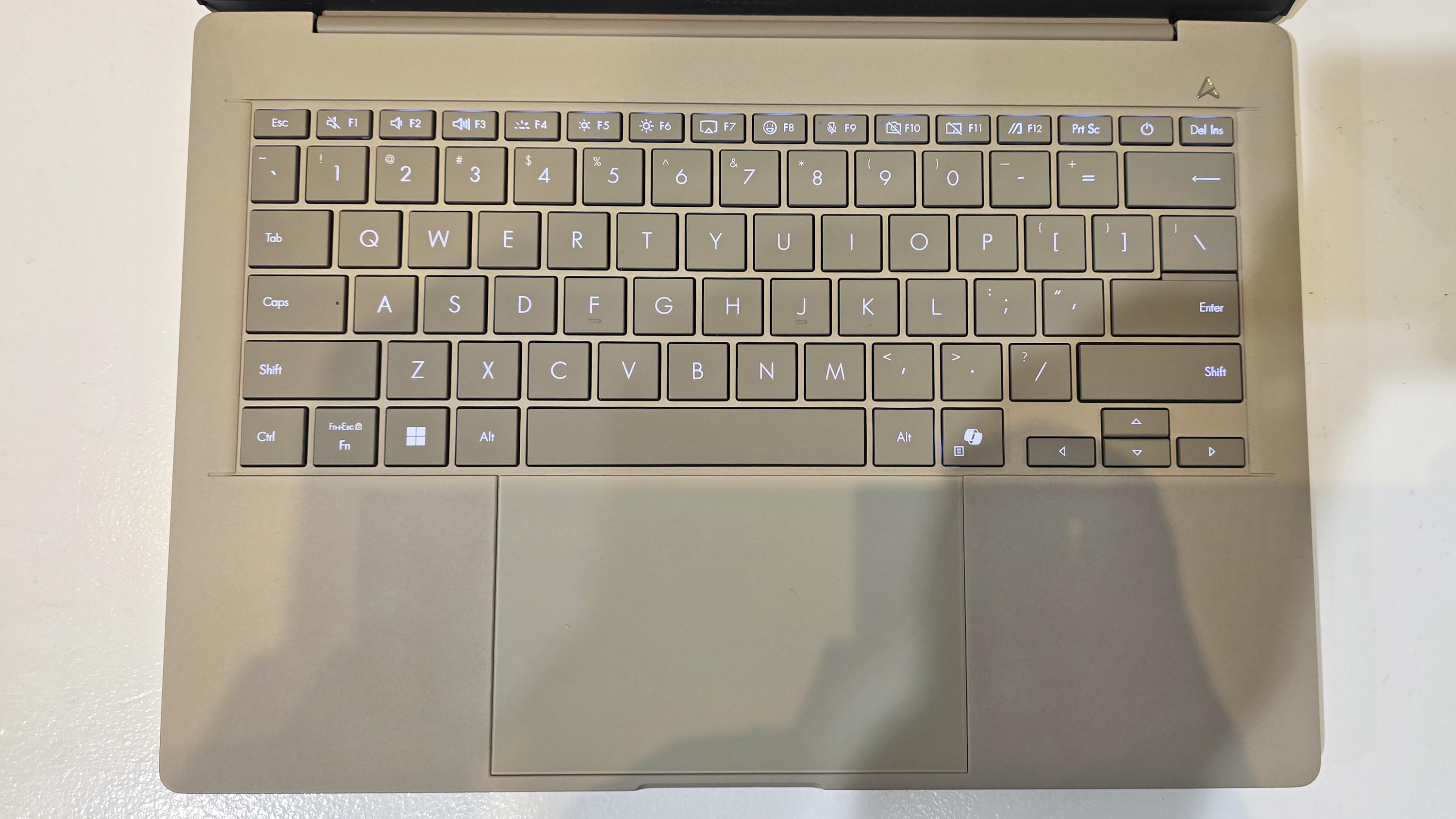
It’s also a Lumina display, ASUS's latest and most advanced OLED display technology. It has a fast response time (0.2 ms), a 1,000,000:1 contrast ratio, VESA DisplayHDR True Black certification, ÜV Rheinland low blue-light certification, OLED Care for burn-in prevention, and is highly color accurate with 100% DCI-P3 coverage.
Additionally, it’s an ASUS NanoEdge display, so extra thin bezels, and an anti-glare coating.
Even the keyboard is neat with 1.3mm of travel (that’s on the higher end) and “offers anti-fingerprint properties.”
You won’t find all of that in many $899 laptops.
RAM starts at 16GB (goes up to 32GB), and that’s because it’s a Qualcomm Snapdragon X and Copilot+ laptop with a 45 TOPS thanks to its NPU. The Zenbook A14 goes up to 1TB PCIe 4.0 SSD, Wi-Fi 6E, Bluetooth 5.3, and a solid assortment of ports, including 2x USB 4.0 (full support), 1x HDMI 2.1, 3.5mm audio combo jack, and 1x USB 3.2 Type-A for your thumb drives and older peripherals.
What is Ceraluminum and why does it matter?
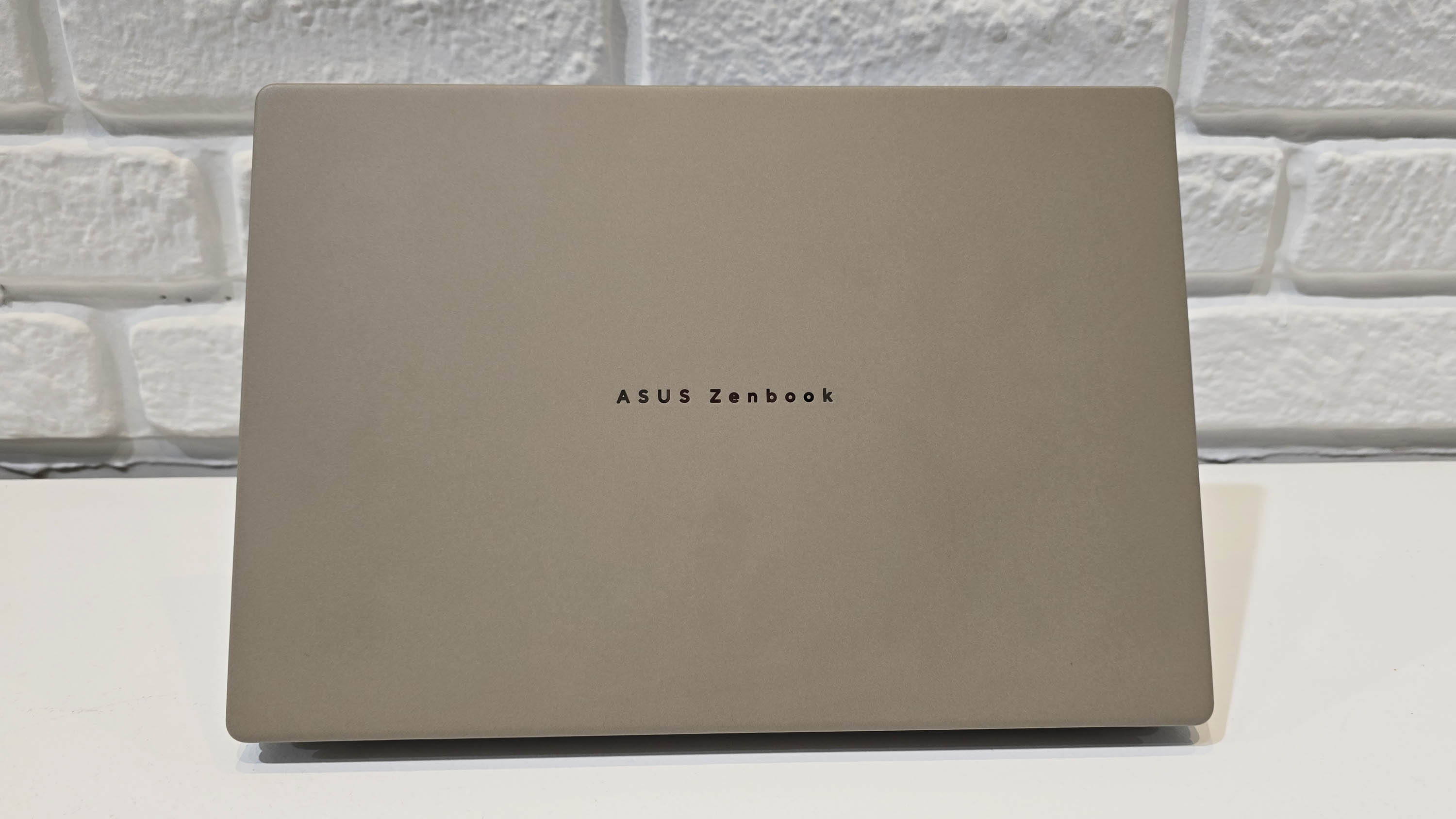
OK, so ASUS likes to push this novel Ceraluminum material, which was first introduced last year in the popular Zenbook S 16 and Zenbook S 14 laptops. (You can read our review of the Zenbook S 16 to get an idea of what we thought about it then.)
Is it just a buzzword? Not as far as I can tell.
ASUS claims Ceraluminum “seamlessly merges the robustness of ceramic with the flexibility of metal.” Basically, it’s what makes the Zenbook A14 so light but also sturdy. Indeed, while ASUS introduced the material last year, the Zenbook A14 is the first to use it for the entire chassis (lid, keyboard frame, and bottom case).
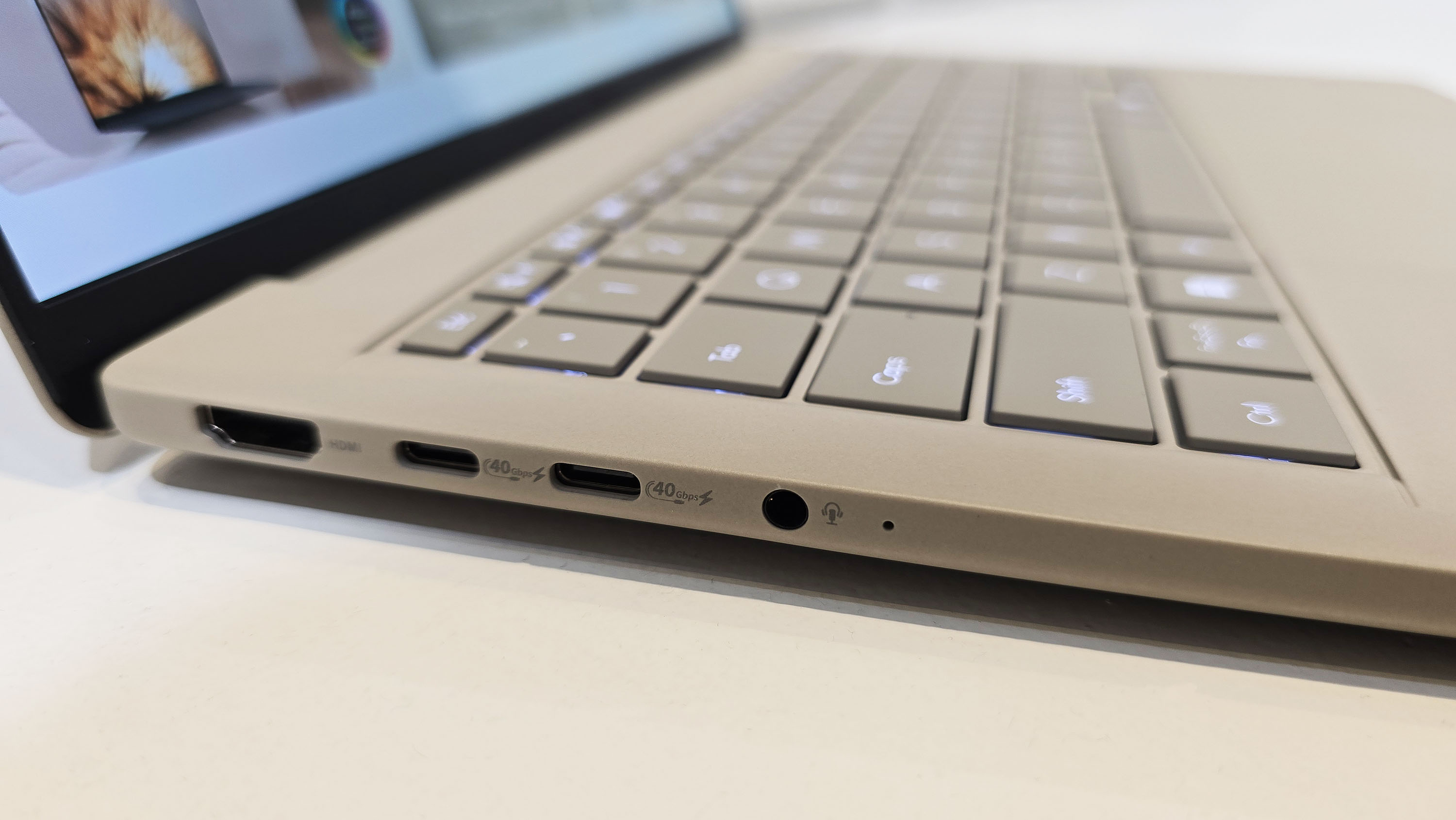

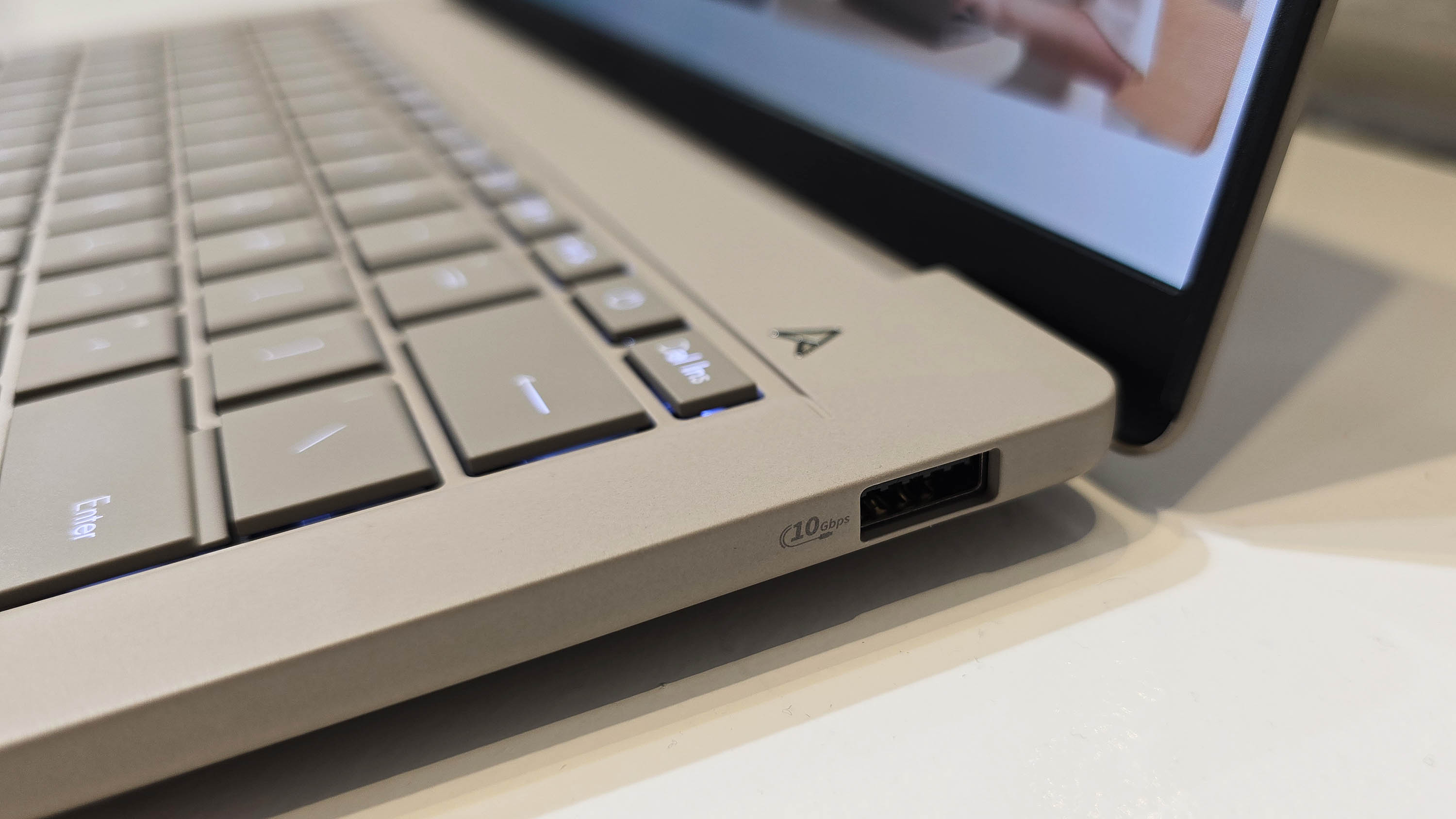
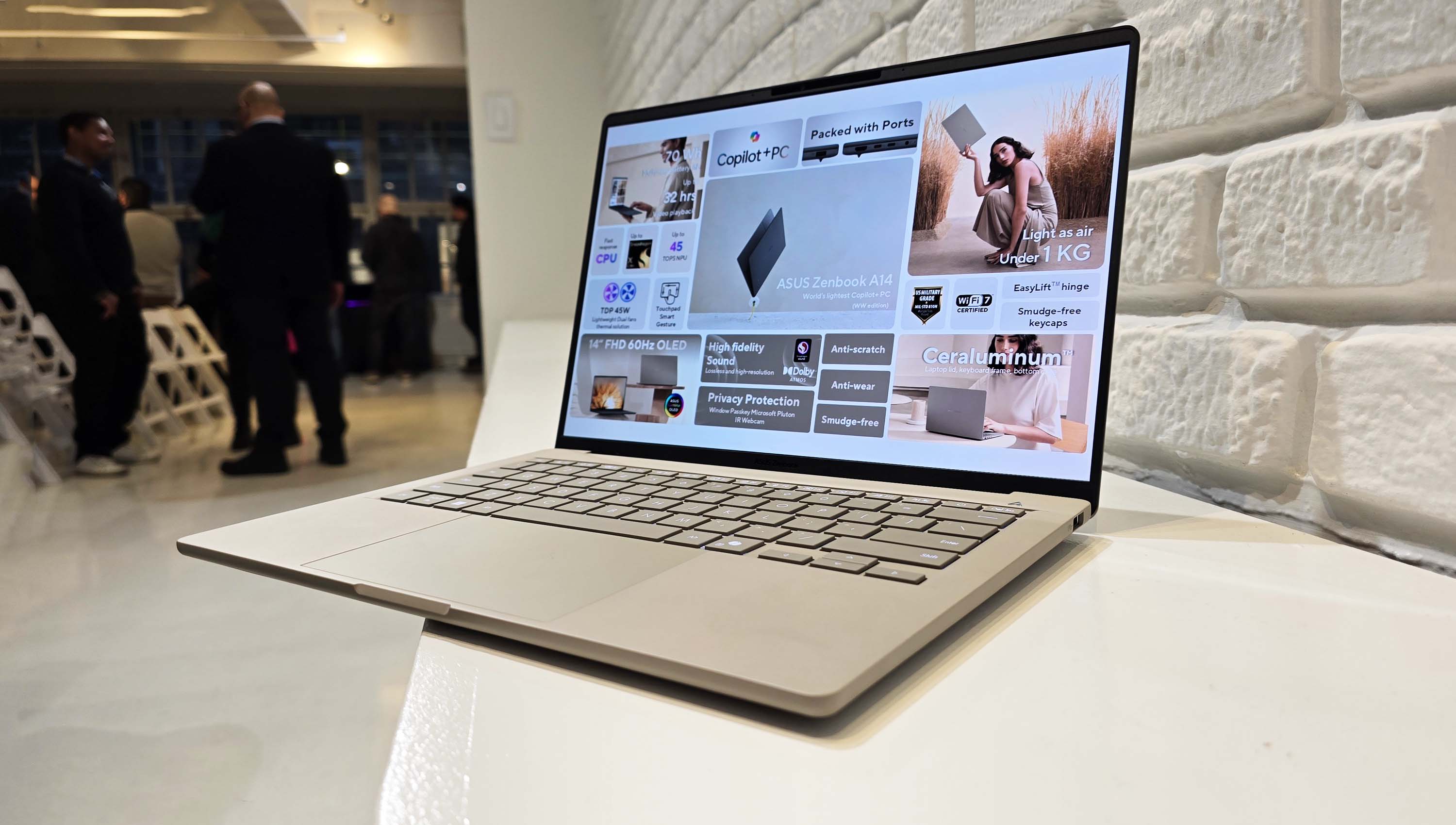
Ceraluminum's unique creation process involves submerging aluminum in hot water and incorporating a ceramic element, resulting in a distinct speckled appearance (it has a nice texture to it, too). Notably, this method is also environmentally friendly, replacing the traditional acid-based aluminum anodization process with pure water. This also means that the two color options, Iceland Gray and Zabriskie Beige, are not painted or dyed but rather a result of the oxidation process in the Ceraluminum's creation, so if you scratch it, you won’t see a sliver of material below it. Plus, it’s (relatively) smudge-free. Wild stuff.
Material science is increasingly important to the tech world, and ASUS demonstrates this with its proprietary Ceraluminum. It’s a neat advancement for the Ultrabook range, but it can also now be found in a $899 laptop, which is surprising.
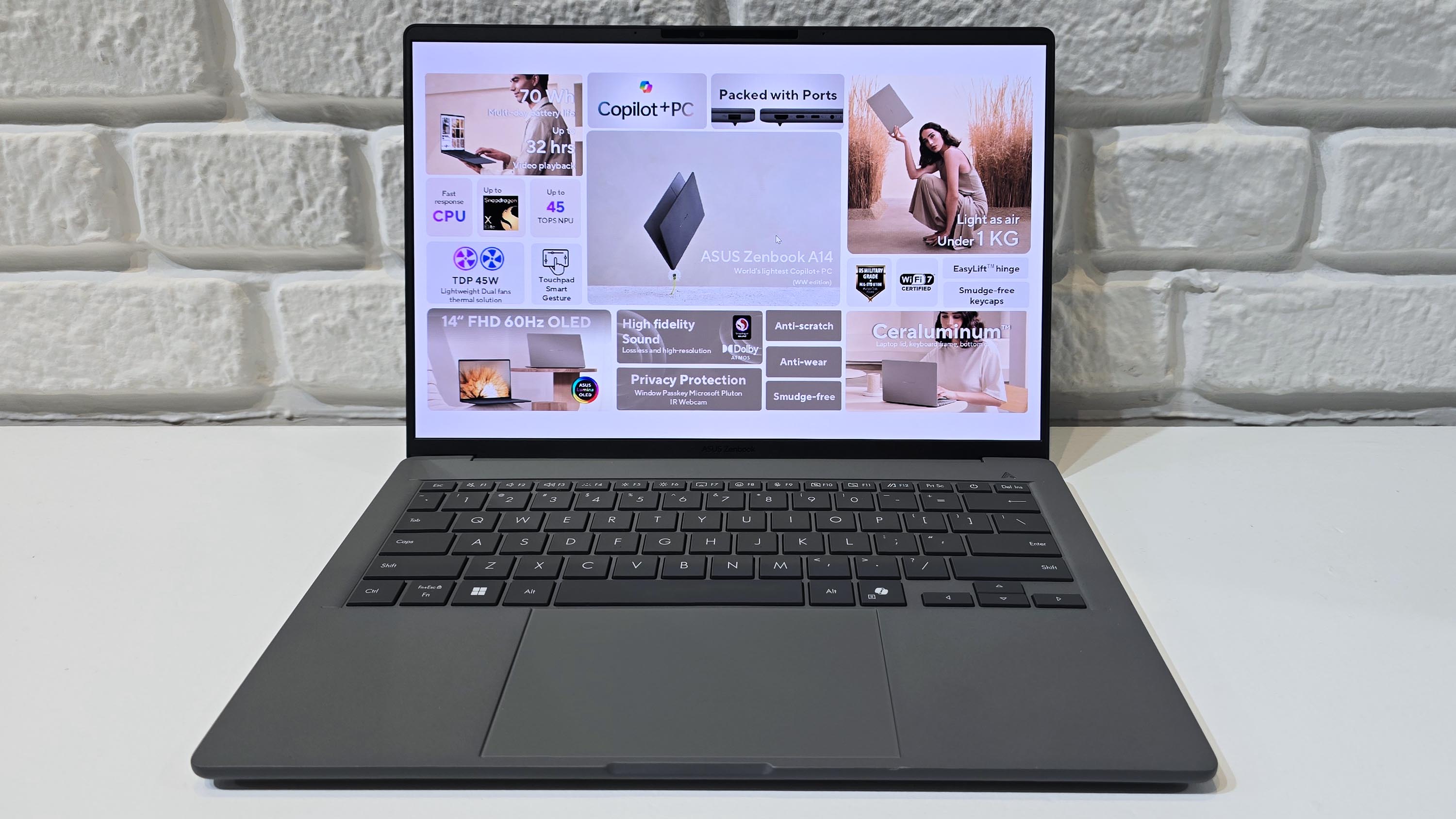
Why is the Zenbook A14 is so great?
A few weeks before CES 2025, I spent some extended time with the Zenbook A14, and it's unlike any laptop I’ve used.
It’s extremely light, feels great due to that Ceraluminum, looks beautiful with those natural “Earth-tone” colors, and features Qualcomm’s Snapdragon X processors, which are a better choice over AMD and Intel (at least for now) for my usage. (That said, I need to use the Snapdragon X daily to see how it really fairs).
I’ve also never been so impressed with a laptop that starts at $899. This is important to me as while I love recommending “premium” laptops that are $1,000+, most of the laptop market is below that. And while $899 is still not cheap, I’m sure eventually there will be sales to bring it down further.
It’s also refreshing to see an OEM push down on prices instead of up (ASUS has reduced the prices of some other 2025 laptops, too). Much of that is due to Qualcomm, whose Snapdragon X series of chips have been undercutting Intel and AMD for price and ship with 16GB of RAM by default.
What does the “A” stand for in Zenbook A14?
This is just a funny anecdote, but ASUS originally wanted to call this laptop the ASUS Zenbook Air 14, but apparently its lawyers shook their head for what are probably obvious reasons.
So, “A14” it is!
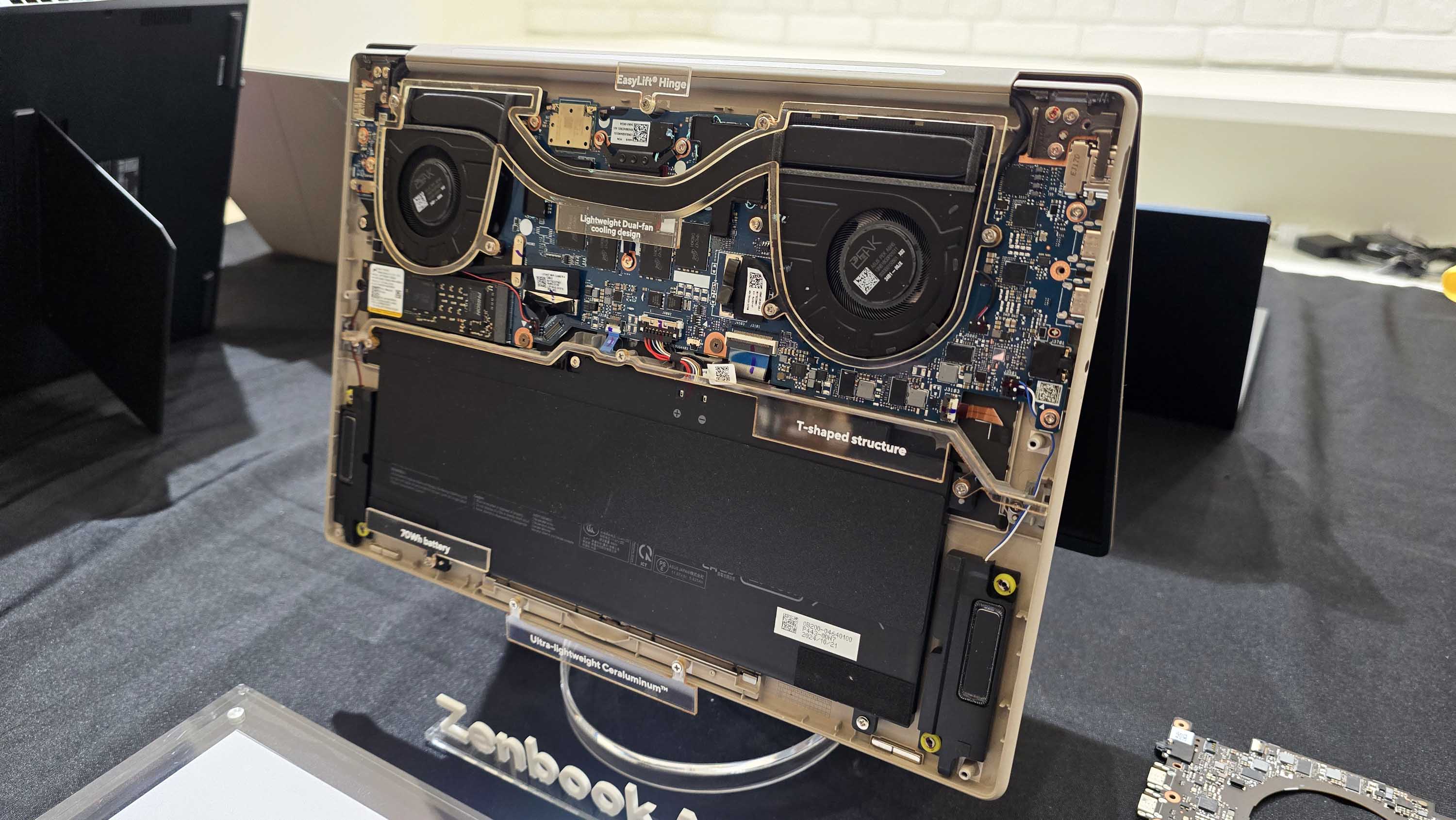
When is the Zenbook A14 available?
Here, there is some good news and bad news.
The good news is that the Zenbook A14 (UX3407QA-PS76) sells on January 13th. It will be available at the ASUS Online Store and Best Buy (online). It features the just-announced Snapdragon X (X1-26-100), 32GB of RAM, and 1TB SSD, but it costs $1,099. It's only available in Iceland Grey.
The bad news is that the $899 model (UX3407QA-X1P512), which is only available in Zabriskie Beige, won’t ship until March, but it will be available at Best Buy online and in-store.
Here’s the weird part: the $899 Best Buy model, which has 16GB of RAM and a 512GB SSD, has the slightly better Snapdragon X Plus (X1P-42-100) chip instead of the Snapdragon X. What’s the difference? The Plus chip gets a 3.4 GHz single-core boost and is 200 MHz faster. That’s the only difference, but you’ll get a bit extra oomph for short bursts, at least.
My advice? Wait for the model in March unless you need 32GB of RAM. You can always upgrade the SSD yourself and even go to 2TB if you want.







